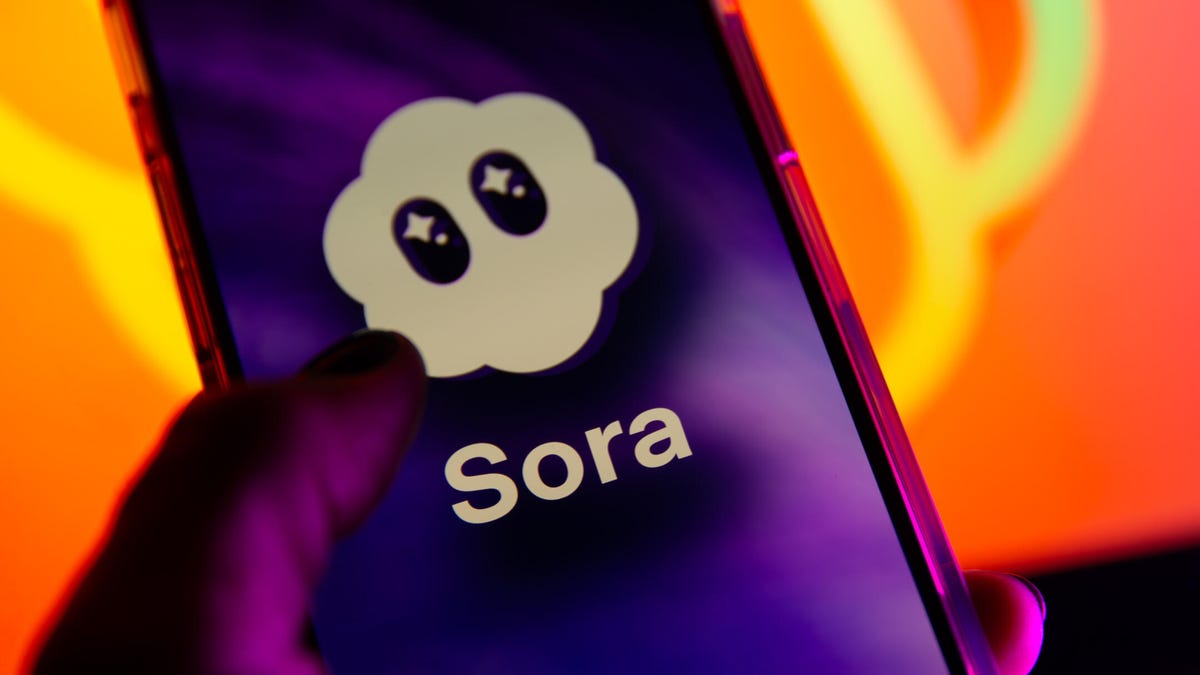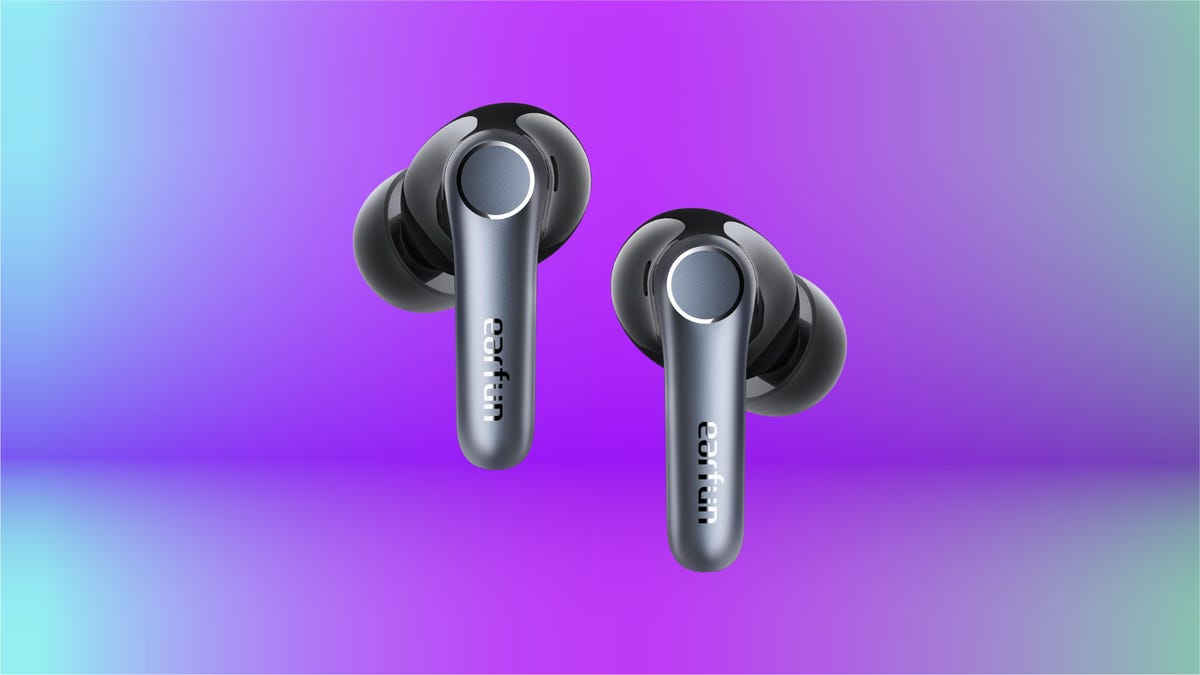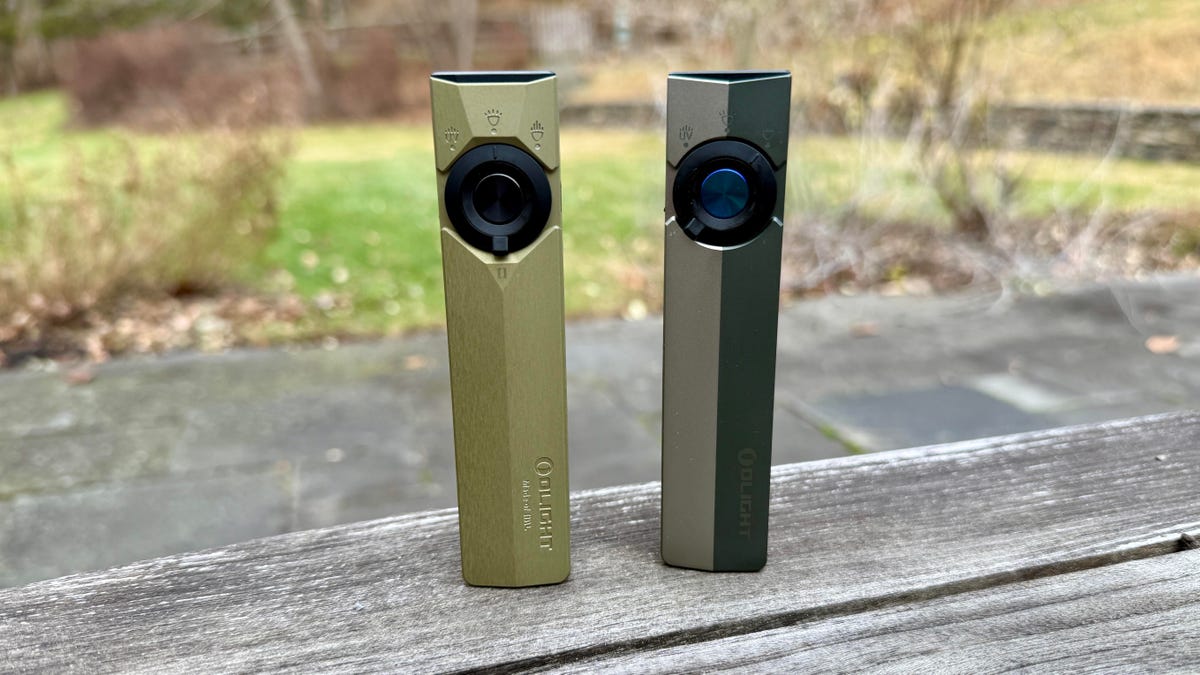Technologies
Best password manager to use for 2021
Ditch the sticky notes and get peace of mind. One of our favorite password managers can be your first defense against getting hacked.

Working remotely has become routine for many of us, which means that it’s more essential than ever to secure your online accounts with strong passwords. But it can be a challenge to memorize dozens and dozens of passwords, and it’s downright dangerous to use the same old password over and over.
If you find yourself consistently getting locked out of one online account or another because you’re drawing a blank when you try to log in, it’s time to consider a password manager, which can help you seamlessly oversee and handle all your login credentials while maintaining password security. They’re also handy for autofilling forms and syncing your data across Windows PCs and Macs, iPhones, iPads, Android phones and more.
A password manager is essentially an encrypted digital vault that stores secure password login information you use to access apps and accounts on your mobile device, websites and other services. In addition to keeping your identity, credentials and sensitive data safe, the best password manager also has a password generator to create strong, unique passwords and ensure you aren’t using the same password in multiple places (password generation really comes in clutch when you can’t come up with yet another unique password on the fly for the latest must-have iOS app). With all the recent news of security breaches and identity theft, having a unique password for each location can go a long way to ensuring that if one site gets hacked, your stolen password can’t be used on other sites. You’re basically using multiple passwords to create your own security features.
Read more: The guide to password security (and why you should care)
Plus, with a manager, you don’t have to remember the various pieces of login information, such as shipping addresses and credit card information. With just one master password, or in some cases a PIN or your fingerprint, you can autofill a form or password field. Some also feature online storage and an encrypted vault for storing documents.
All our best password manager picks come in free versions, which typically let you securely store passwords for one device — although our pick for the best free manager can currently be used for syncing across multiple devices — and all handle hardware authentication through YubiKey. Our best password security manager picks also feature subscription options that let you sync your secure password login information across devices, share credentials with trusted family and friends, and get access to secure online storage. And if transparency is important to you, several of our picks are open-source projects. We also look at what a password manager is, its security features and the basics of how to use one.
Note that these password manager services are independently chosen by our editors. We’ll be updating this story periodically as new options become available. In light of our top choice’s recent pricing change, we may be reconsidering the order in the near future, and will update this story accordingly.
Read more: LastPass vs. 1Password: How the two popular password managers stack up in 2021
Read more: The best web hosting providers
Other free and paid options worth considering
Bitwarden, LastPass and 1Password are solid, affordable (or free) password keepers, and in a straw poll of CNET staffers, they were about neck-and-neck in use. But if you find none of our three recommended password managers works quite how you want, a handful of other apps are worth considering. These all have free versions available.
Dashlane
- Offers limited free version (50 passwords on one device)
- Base price beyond free: $59.88 per year
- Works with: Windows, MacOS, Android, iPhone and iPad. Browser extensions for Chrome, Firefox, Safari, Internet Explorer, Edge and Opera.
Dashlane provides a simple and secure way to manage your passwords and keep other login information stored. Just for managing passwords, we like it as much as our picks, but the free Dashlane app limits you to one device and 50 passwords. The $60 Premium subscription is similar to plans from 1Password and LastPass. The $120 Premium Plus annual subscription adds credit and ID-theft monitoring.
Keeper
- Offers limited free version (unlimited passwords on one device)
- Base price beyond free: $35
- Works with: Windows, MacOS, Linux, Android, iPhone and iPad. Browser extensions for Chrome, Firefox, Safari, Internet Explorer, Edge and Opera.
Keeper is another secure password manager that helps you manage login info on Windows, MacOS, Android and iOS devices. A free version gives you unlimited password storage on one device. The step-up version costs $35 a year and lets you sync passwords across multiple device options. For around $45 a year, you can get 10GB of secure file storage.
KeePassXC
- It’s free
- Donations accepted
- Works with: Windows, MacOS, Linux, Chrome OS, Android, iPhone and iPad, BlackBerry, Windows Phone and Palm OS. Access via the web plus popular browser extensions. (Except for the official Windows version, KeePass for other platforms are unofficial ports.)
KeePass, another open-source software password manager, started on Windows and has been ported using the same code base to other platforms, including MacOS, Android and iOS. On the plus side, it’s totally free and endorsed by the Electronic Frontier Foundation. On the other hand, it’s really for advanced users only: Its user interface takes a bit of fiddling to get all the independently built versions of KeePass to work together.
What about NordPass and Norton Password Manager?
There’s been a shift in the market for VPN and antivirus software in recent months. Many of the companies behind these software packages are expanding them to become wider software suites. For instance: NordVPN now offers NordPass, a dedicated password manager, and Norton now offers a Norton Password Manager as part of its antivirus and identity theft packages. We haven’t specifically reviewed these password storage managers, if only because they don’t yet appear to have a feature set or pricing option that beats any of our preferred options above. If and when that changes, we’ll check them out in more detail.
Password manager basics
Still need more info on what password managers are, and why they’re better than the alternatives? Read on.
How does a password manager work?
To get started, a password manager will record the username and password you use when you first sign in to a website or service. Then the next time you visit the website, it will autofill forms with your saved password login information. For those websites and services that don’t allow automatic filling, a password manager lets you copy the password to paste into the password field.
If you’re stuck picking a good password, a manager can generate a strong password for you and watch that you aren’t reusing it across multiple services. And if you use more than one device, you want a manager that is available across all your devices and browsers, so you can access your passwords and login information — including credit-card and shipping information — from anywhere through the manager app or its browser extension. Some provide secure storage so you can store other items too, such as documents or an electronic copy of your passport or will.
Take note: Many password managers keep the master password you use to unlock the manager locally and not on a remote server. Or if it’s on a server, it’s encrypted and not readable by the company.
This ensures your account stays secure in case of a data breach. It also means that if you forget your master password, there may not be a way to recover your account through the company. Because of that, a few password managers offer DIY kits to help you recover your account on your own. Worst-case scenario, you start over with a new password manager account and then reset and save passwords for all your accounts and apps.
Read more: This is how we might finally replace passwords
What makes for a secure password?
When trying to avoid a weak password, a good password should be a long string of capital and lowercase letters, numbers, punctuation and other nonalphanumeric characters — something that’s difficult for others to guess, but a snap for a password manager to keep track of. And despite what you may have heard, once you select a good complex password or passphrase, you don’t really need to change it periodically.
Can I use a web browser to manage my passwords and login information?
You can certainly use Chrome, Safari or Firefox to manage your passwords, addresses and other login data. You can even set up a master password to unlock your credentials within a browser. And while using an online browser’s password tool is certainly better than not using a password keeper at all, you can’t easily access your passwords and other login info outside of the browser or share login info with others you trust.
What about iCloud Keychain?
Through iCloud Keychain, you can access your Safari website usernames and passwords, credit card information and Wi-Fi network information from your Mac and iOS devices. This cloud storage option is great if you live in Apple’s world. But if you venture outside the Apple operating system and have a Windows or Android device or use the Google Chrome or Firefox browser, iCloud Keychain comes up short.
David Gewirtz contributed to this story.
More computer advice
- Best VPN services
- Best identity monitoring services
- Best web hosting providers
- Best WordPress hosting of 2021
- Best website builder for 2021: Squarespace, Wix and more compared
- Best antivirus protection for Windows 10
- 5 best ways to make sure your credit data hasn’t been breached
- This is the best free password manager
- Best gear for video chats from home: Webcams, lights, mics and more
- Best Android VPNs of 2021
- 7 must-have ergonomic upgrades for your home office
- Best Mac VPN of 2021
- Best cheap VPN of 2021
Technologies
Sora and Google’s Nano Banana Pro Are Slammed, and Scale Back Free Videos and Images
OpenAI and Google are reducing the number of image or video requests you can make on their latest media-generation platforms.

Maybe it’s because of the holiday weekend.
OpenAI’s video generator Sora and Google’s image generator nano banana pro are placing new limits on how many videos (in the case of Sora) and AI images (in the case of nano banana pro) you can make per day.
With more people using their Thanksgiving weekend idle time to, say, make AI videos of cats as angry service industry cashiers, it’s likely these services are hitting their limits.
Bill Peebles, OpenAI’s head of Sora, posted on X, «our gpus are melting, and we want to let as many people access sora as possible!» GPUs are the graphics processing units used by AI services for the complex computations they need to perform.
Peebles wrote that Sora will limit free video generation to six videos per day. ChatGPT Plus and Pro accounts won’t see any changes.
«And everybody can purchase additional gens as needed,» he wrote.
Don’t miss any of our unbiased tech content and lab-based reviews. Add CNET as a preferred Google source.
Gemini limits
As for Google’s image generator, a Gemini support page says that those without a Google AI plan are now limited to two images generated and edited per day with nano banana pro. The previous limit was three, according to 9to5Google, which also spotted new usage limits on Gemini 3 Pro that are variable. The same support page says free access to Gemini 3 Pro Thinking includes «Basic access — daily limits may change frequently.»
The limit for nano banana (the previous 2.5 non-pro version) is 100 free images per day.
A representative for Google did not immediately respond to a request for comment.
(Disclosure: Ziff Davis, CNET’s parent company, in April filed a lawsuit against OpenAI, alleging it infringed Ziff Davis copyrights in training and operating its AI systems.)
Technologies
If You Don’t Want to Pay AirPod Prices, I Found Great Noise Canceling Earbuds That Are Only $53 for Black Friday
You don’t need to spend a fortune to get a great pair of earbuds.

Black Friday deal alert: If you’re looking for a new pair of noise-canceling earbuds, there are some good deals on Apple AirPods right now, but you might be able to spend half as much to get similar performance. I’ve found that the Air Pro 4 earbuds from Earfun are legitimate contenders to the AirPods, at a much lower price. Right now at Amazon for Black Friday, you can get the Air Pro 4s for a steal — they’re 34% off, which drops their price down to $53.
In short, they’re great, and the black ones are currently available on Amazon for $53, near the lowest price we’ve ever seen them sell for. The other colors are also on sale; the glossy white and royal blue are both $68.
Hey, did you know? CNET Deals texts are free, easy and save you money.
HEADPHONE DEALS OF THE WEEK
-
$248 (save $152)
-
$170 (save $181)
-
$199 (save $150)
How these earbuds silence the noise around you
I prefer in-ear headphones because they offer active, electronic and passive noise cancellation. Passive noise cancellation basically consists of plugging your ears with the rubbery tips included with the earbuds.
The Earfuns fit well for me when I use the second-largest of the five swappable ear tip sizes, and they stay sealed and comfortable for hours. Sometimes I have to reseal one after I yawn or something, but that’s the case with other in-ear headphones, too.
For reading, I prefer Earfun’s «Strong ANC» noise-canceling mode, which makes a big difference when blocking out the noise around you, but there are a bunch of other noise-cancellation options. The Ambient Sound function is good for when I want to pay attention to my surroundings.
Overall, I found the app easier to use than Sony’s and just as capable. The main difference is that Sony’s app has a variable slider for ambient sound.
The Earfun app also includes a white noise section in the app. Normally, I prefer Spotify for white noise (and I download my favorite playlists for offline listening) but this feature is useful for people who don’t have another music service. It includes birdsong, waves and rainfall, all of which are short clips that repeat automatically.
Why I chose these earbuds over AirPods
These headphones have every other feature I’d expect, including the ability to connect to two devices simultaneously and programmable touch-sensitive controls on the buds. Plus, battery life has been more than ample for me, even after a marathon reading session.
There’s also a finder function if you misplace either earbud (unlike Apple FindMy, however, they have to be connected and in Bluetooth range). For actual music and voice calling quality, they sound fine, albeit not as good as my big Sonys.
I have an iPhone and briefly thought about buying Apple AirPods, but I didn’t want to spend the money. The AirPods 4 with noise cancellation cost $115 more than these Earfuns and have an open-ear design, so they rely entirely on the electronic (not passive) method. The AirPods Pro 2 are in-ear and superb, but I didn’t want to spend $250 on a pair of secondary headphones.
Yes, I could probably save some money on an even less expensive pair of in-ear noise-cancelling headphones, but I’m not sure I’d be as happy with their fit, long-term comfort, battery life and noise-cancellation performance. The Earfun Pro 4 buds help me relax and concentrate on my book, and for me that’s priceless.
For more headphone savings, check out our roundup of all the best deals on headphones, or find bargains of all kinds in our roundup of the best Amazon Prime Day deals going on now.
Join Our Daily Deals Text Group!
Get hand-picked deals from CNET shopping experts straight to your phone.
By signing up, you confirm you are 16+ and agree to receive recurring marketing messages at the phone number provided. Consent is not a condition of purchase. Reply STOP to unsubscribe. Msg & data rates may apply. View our Privacy Policy and Terms of Use.
Technologies
I Have a Flashlight Fetish and My Favorite New Olight Is 20% Off for Black Friday
Olight’s sleek new pocket flashlight, the ArkPro, is normally $100. But it’s down to $80 for Black Friday and Cyber Monday.

Truth be told be told, I have a thing for flashlights. Not a bad thing, just a certain appreciation for a well-designed torch, as the Brits might say.
Bright flashlights are good, naturally, but a small, sleekly designed rechargeable everyday carry flashlight that puts out a decent amount of light is high on my list of flashlight favorites, and the new Olight ArkPro and its slightly brighter sibling, the ArkPro Ultra, fit the bill. They’re both on sale for Black Friday and Cyber Monday for 20% off. The ArkPro is down to $80 ($100 list) while the ArkPro Ultra’s price has dipped to $104 ($130 list).
The flashlights are upgraded versions of Olight’s Arkfeld Pro ($70) and Arkfeld Ultra ($84), with higher brightness ratings. Both new models have similar flat, IPX7 waterproof designs with sturdy metal bodies and a magnetic base that allows you to attach the flashlight to anything metal. There’s also an integrated clip-on mount, and they come in cool white and neutral white color temperature versions.
You get three lighting modes: a 1,500-lumen floodlight mode (1,700 lumens for the ArkPro Ultra), an 800-lumen, 205-meter reach spotlight mode (it’s the same for the Ultra) and a UV light mode. You can also activate a green beam laser pointer.
The flashlights come with a wireless charger that magnetically attaches to the base, but you can also charge them via USB-C, which I found more convenient.
I mainly tested the flashlights while walking my dog at night in a pretty remote rural area in New York. The floodlight mode works better for dog walking, but I’d sometimes switch to spotlight mode when I wanted to gauge what was further ahead of us or check whether anything was lurking in the trees or bushes.
These smaller EDC flashlights are well-suited to a variety of activities, including camping and anything you’re doing where you’d like to have a flashlight handy that you can easily carry around in a pocket. You can find similar flat flashlight designs from other brands on Amazon — some of them for significantly less money. However, Olight is considered a premium EDC flashlight brand, though some flashlight enthusiasts are less enthusiastic about the brand for a few reasons. That said, I’m just fine recommending these new ArkPro models when they’re discounted like this. And they do make for nice gifts this time of year.
Join Our Daily Deals Text Group!
Get hand-picked deals from CNET shopping experts straight to your phone.
By signing up, you confirm you are 16+ and agree to receive recurring marketing messages at the phone number provided. Consent is not a condition of purchase. Reply STOP to unsubscribe. Msg & data rates may apply. View our Privacy Policy and Terms of Use.
-

 Technologies3 года ago
Technologies3 года agoTech Companies Need to Be Held Accountable for Security, Experts Say
-

 Technologies3 года ago
Technologies3 года agoBest Handheld Game Console in 2023
-

 Technologies3 года ago
Technologies3 года agoTighten Up Your VR Game With the Best Head Straps for Quest 2
-

 Technologies4 года ago
Technologies4 года agoBlack Friday 2021: The best deals on TVs, headphones, kitchenware, and more
-

 Technologies4 года ago
Technologies4 года agoVerum, Wickr and Threema: next generation secured messengers
-

 Technologies4 года ago
Technologies4 года agoGoogle to require vaccinations as Silicon Valley rethinks return-to-office policies
-

 Technologies4 года ago
Technologies4 года agoOlivia Harlan Dekker for Verum Messenger
-

 Technologies4 года ago
Technologies4 года agoiPhone 13 event: How to watch Apple’s big announcement tomorrow
